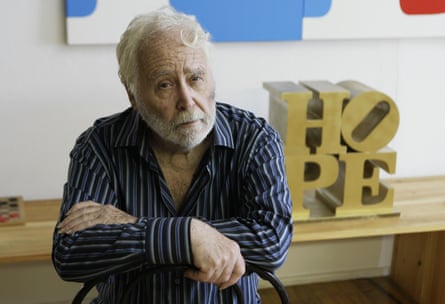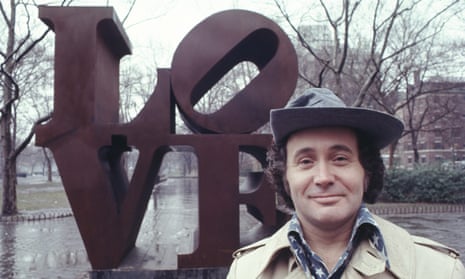American pop artist Robert Indiana, best known for his 1960s Love series, has died at his island home off the coast of Maine. He was 89.
Indiana died on Saturday from respiratory failure at his Victorian home in a converted Odd Fellows hall, a fraternal order lodge, where he had lived for years on Vinalhaven Island, said James Brannan, his attorney.
Friends had expressed concern for his well-being because the reclusive artist had not been heard from for some time.
The artist’s Love sculpture, in which the L and a leaning O sit atop the V and the E, is instantly recognisable worldwide. But he has created other works as well, and fashioned a Hope design, similar to Love, in honour of former President Barack Obama, after the word became synonymous with Obama through a Shepard Fairey poster.

“In some ways [Indiana] was perhaps seen as the proverbial one-hit wonder because Love was so immensely iconic and immensely huge in pop culture. For better or for worse, it overshadowed some of his other contributions,” said Dan Mills, the director at Bates College Museum of Art in Lewiston, Maine.
In his later years, he was known for living an increasingly reclusive life 15 miles off the mainland on Vinalhaven, where he moved in 1978.
Kathleen Rogers, a friend and former publicist, told the Associated Press that she was so concerned she contacted the Maine Department of Health and Human Services to investigate six to eight weeks ago. Through tears, she said did not want Indiana to be remembered for shutting out friends and closing his studio.
“He was a better guy than he’s been portrayed as being. He was reclusive, cantankerous and sometimes difficult. But he was a very loyal, loving man. He was the architect of love,” she said.
A health department spokeswoman did not immediately return a message seeking comment.

As the story goes, Indiana, who was born in Indiana, settled in Maine after becoming disillusioned with the art scene in New York. But he told the Associated Press in 2009 that he had moved to his house — which a benefactor bought for him — when he needed a place to go after his lease ran out on a five-storey studio and gallery New York’s Bowery district.
Such was his need for solitude that he once failed to show up at a reception with President Obama at the White House. Another time he made a crew from NBC’s Today show wait days before he would let them interview him. In 2014, he disappointed dozens of fans by failing to make an appearance outside his home for an event dubbed International Hope Day, inspired by his creativity. Events were still held in several locations around the world.
Although he created a wealth of art, Love overshadowed his other work. When the Whitney Museum of American Art held a retrospective in 2013, Robert Indiana: Beyond Love, he quipped: “Well, that’s taken a while.”
In Maine, Mills said he had been inspired by the Whitney’s efforts to produce a further 2016 exhibition, Robert Indiana: Now and Then. It was one of the last major shows focusing on Indiana’s work.

Comments (…)
Sign in or create your Guardian account to join the discussion